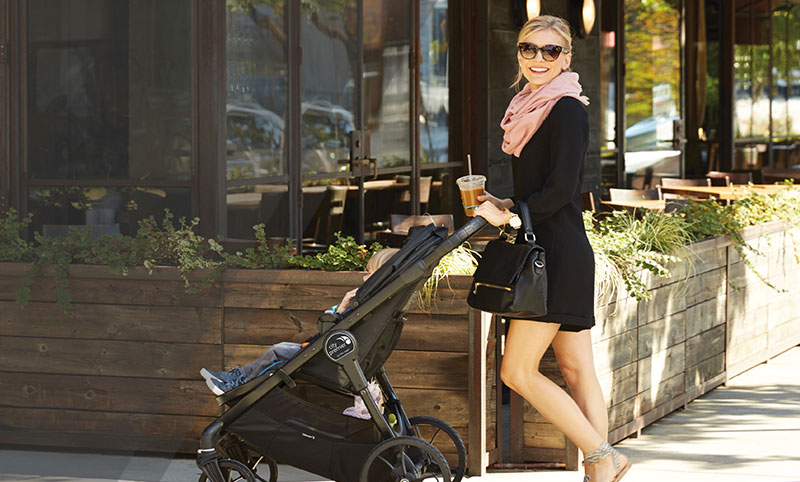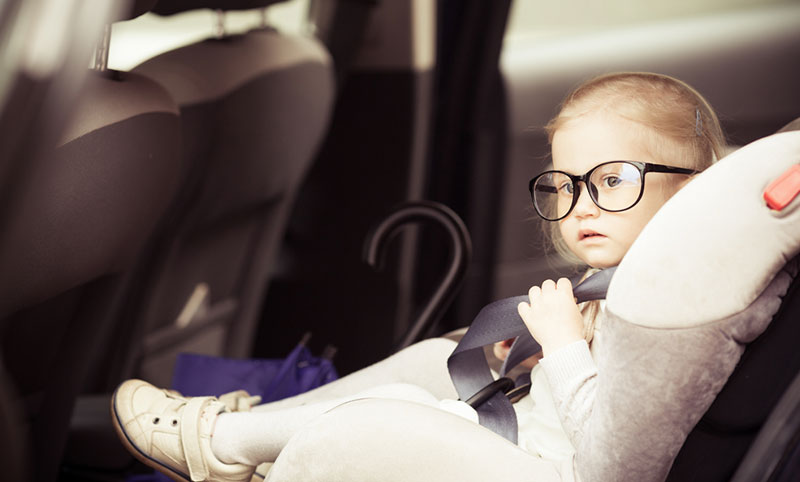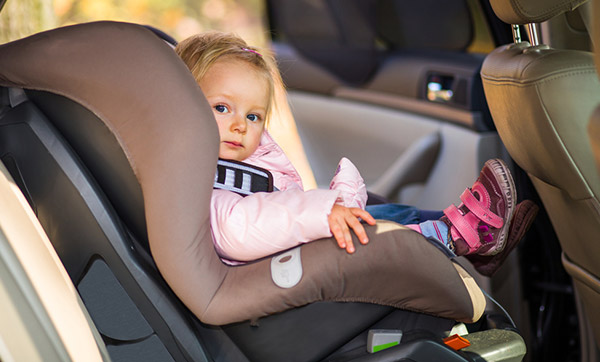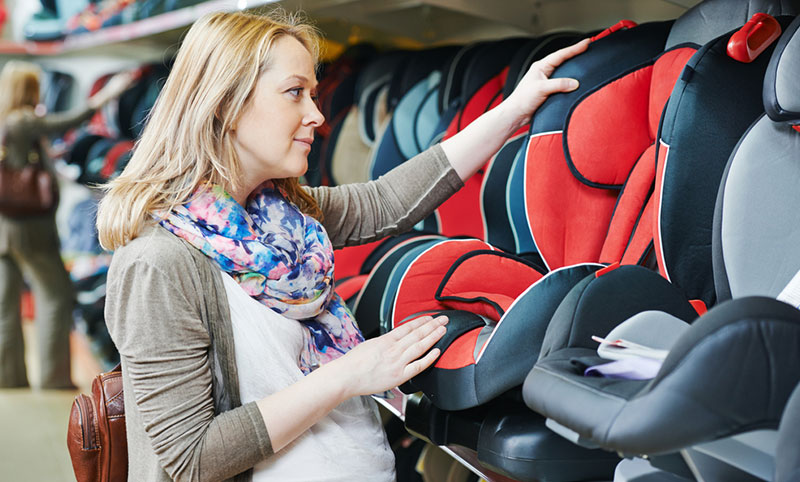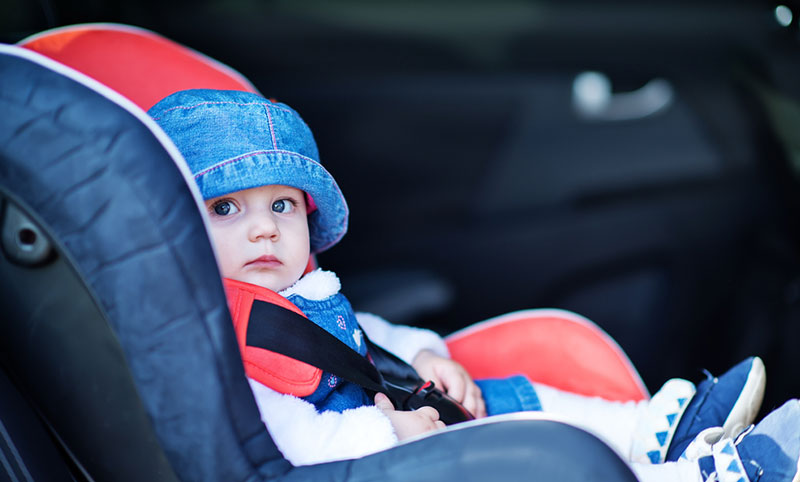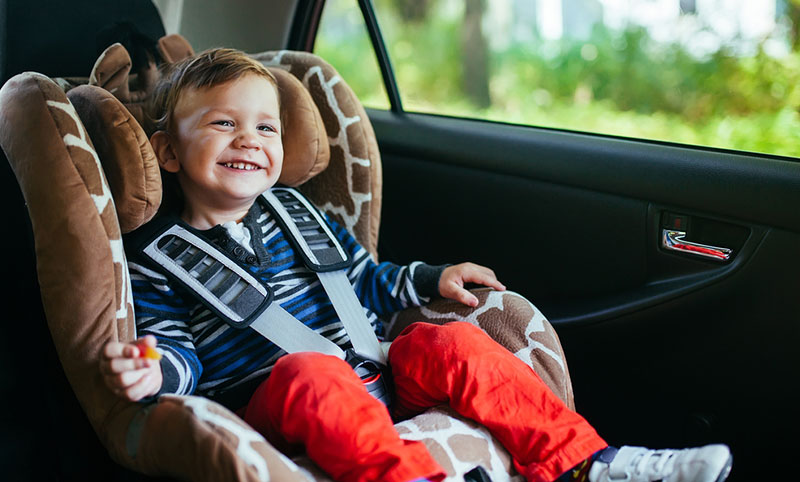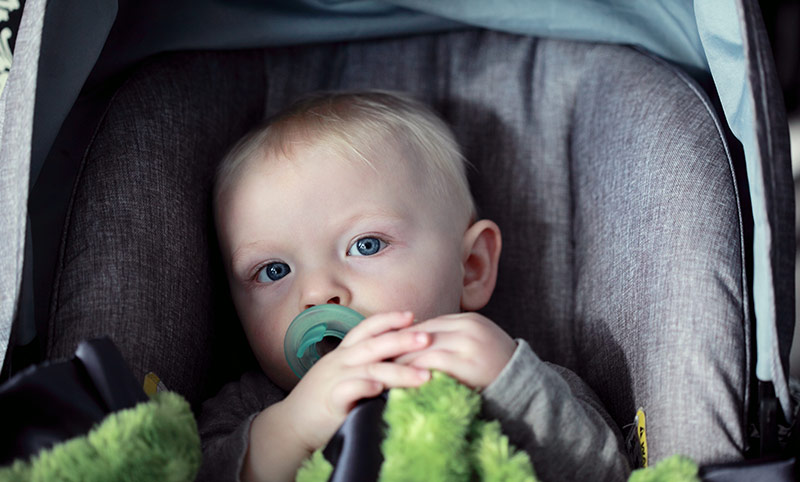
At What Age Should A Baby Change Car Seats?
Before buying a trendy car seat or grabbing a hand-me-down from a trusted friend, it’s important to keep safety a top priority. While this seems obvious, the lines seem blurry to many parents who are not sure about the specifics of child safety restraints.
The National Highway Safety Commission (NHSC.gov) has three key indicators to help you pick the best car seat for your needs. Their catchy slogan is right car, right age, & right size. While their guidelines help you to figure which type of seat to choose, it leaves some gray area in terms of when your child can graduate into a forward-facing or booster seat. As with any kind of parenting, do your research and trust your intuition.
To Start
Children under the age of one should always be in a rear-facing car seat and in the back seat of the car. This is non-negotiable. If you have a truck or some kind of vehicle without a back seat, make sure to turn off the airbag since it’s 200MPH deployment can cause more harm than good.
Rear-facing car seats can come in the form of a ‘Bucket Seat’ that has a big handle on top with the ability to click in and out your car or stroller. They are convenient for parents on-the-go but not the only option. You can also get a rear-facing car seat that stays in the car and has been tested to be safe for newborns.
Once your child is over the age of one and nearing the 40 lbs limit of the seat, then it is time to start considering graduating to a seat meant for larger kids.
3-in-1 or Harness?
While shopping, don’t be surprised if some seats feel as if they are light as a feather and others remind you of military tanks. What matters is to check the manufacturer’s rating since their suggestions are based on intense crash-tests that are meant to simulate real-life situations.
If you are unsure about graduating your child to a forward-facing seat but your intuition is telling you they are done with their bucket seat, you can always go with a weight appropriate 3-in-1 car seat. These are suited for both rear and forward-facing installations. What’s more, the weight ranges for them can be as low as 5 lbs, meaning they are safe for use at any stage during those first few years.
A bit more spacious than the bucket seat, kids can wiggle their legs and move their arms while still being safely secured. Keeping them more comfortable also allows you to keep them rear-facing for longer.
If you are confident that they are ready to be forward-facing and are within the manufacturer’s weight limit, go ahead and graduate them to a harness seat. These seats are a bit more upright and mimic the feeling of being in a regular chair. With a 5-point harness system, it is still safe for your child and as a bonus, allows them to look out the front of the car, exploring rides in a whole new way.
While there is no specific age in which they can graduate up to a Harness Seat, it is recommended to keep your child rear-facing as long as possible, even until the age of 3.
Booster Seats
Once your child is in first grade, they may be ready to move on to a booster seat.
If they are happy in their harness and riding comfortably, you can keep them in their Harness Seat even longer. For those who seem too big or you feel it is time to graduate up, a Booster Seat gives them a ‘big kid’ feel while keeping them safe.
It boosts them to allow for the seatbelt to rest securely across their lap and chest. Unlike the other seats they have been in until now, you need to know what to look for in order to ensure that they are safe. Key guidelines to follow are:
- The lap portion of the seatbelt should fit snuggly over their thighs without sliding up and down the leg.
- The chest strap should go smoothly across their chest and over the shoulder without rubbing against their neck.
- The seat should not slide around the car while they are sitting on it.
If you put them in and find that they are not ready just yet, it’s okay! The trusted harness seat can still hold them safely.
Here are some examples of booster seats that are suitable for school-aged children.
Conclusion
Ultimately, choosing a new car seat is more about your child’s situation than it is about age. The biggest factor is your child’s weight and length. Ask yourself: How long can they be rear-facing before car rides become uncomfortable?
Combining your child’s height and weight, along with your car type, will allow you to shop with confidence when picking the right seat for your child. For proper installation, visit your local police or fire station and ask if there is anyone trained on proper car seat installation. They can give you invaluable information.
Note: The information in this article is based on the United States National Highway Saftey Commission standards. Standards may vary in other regions.

